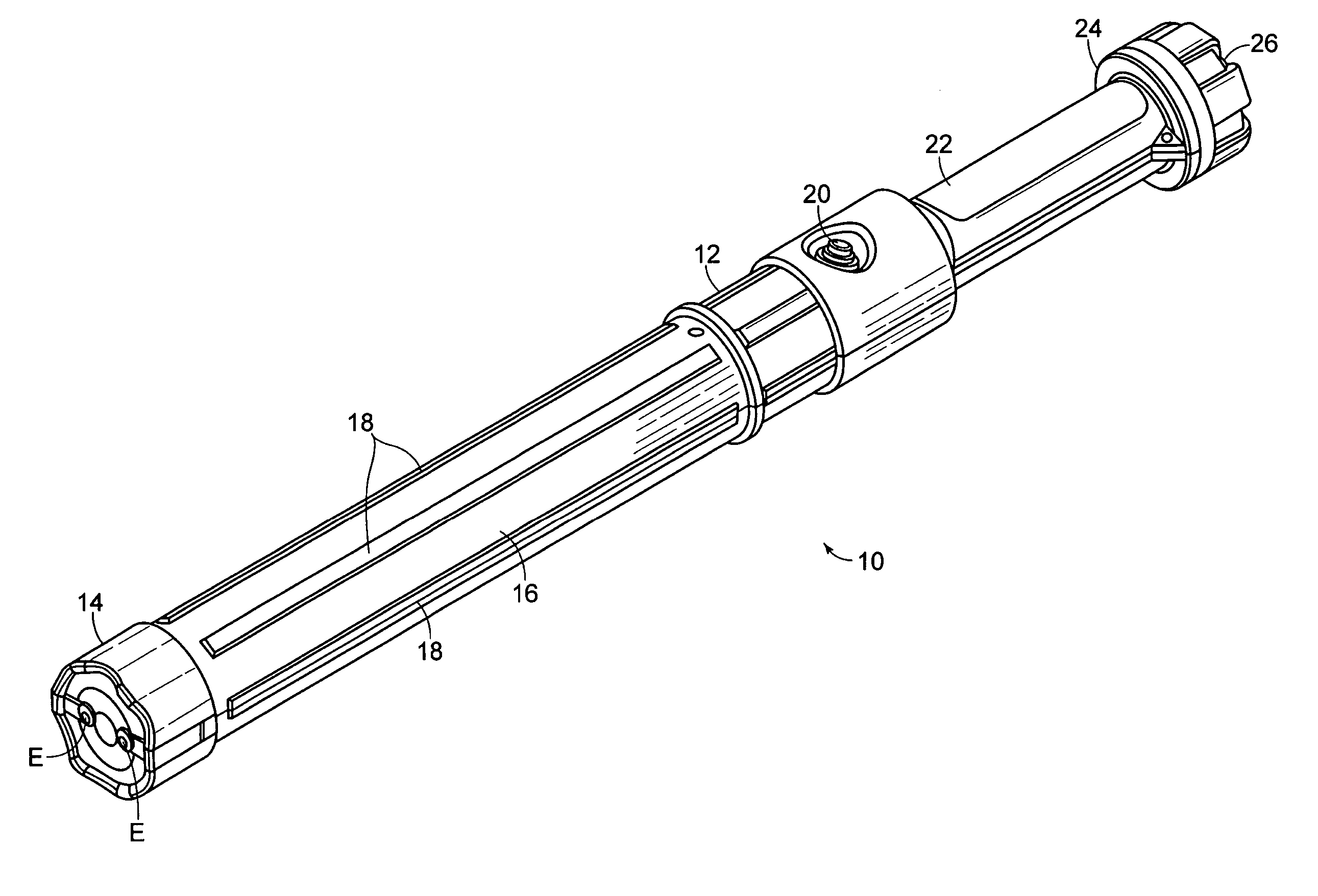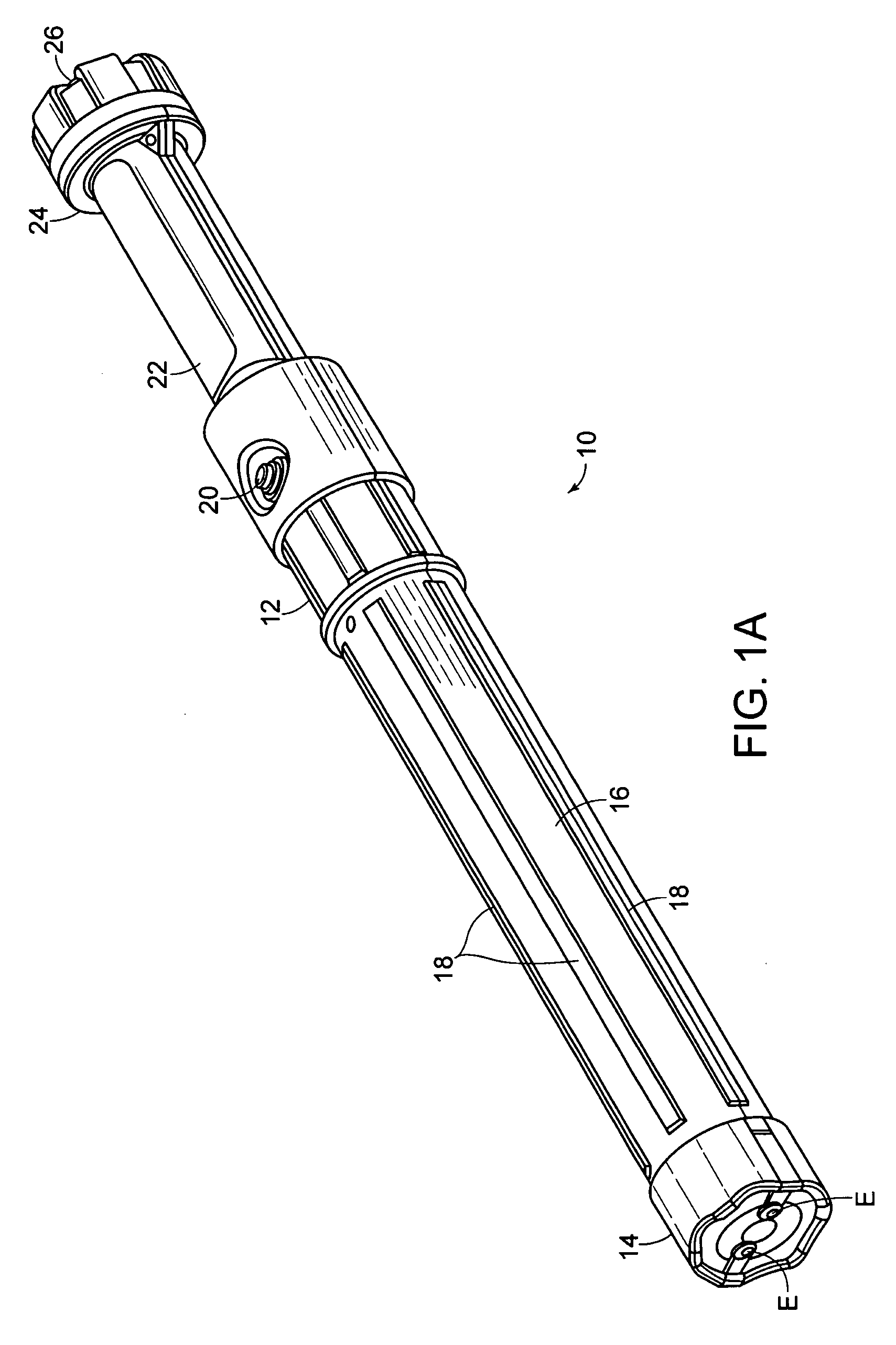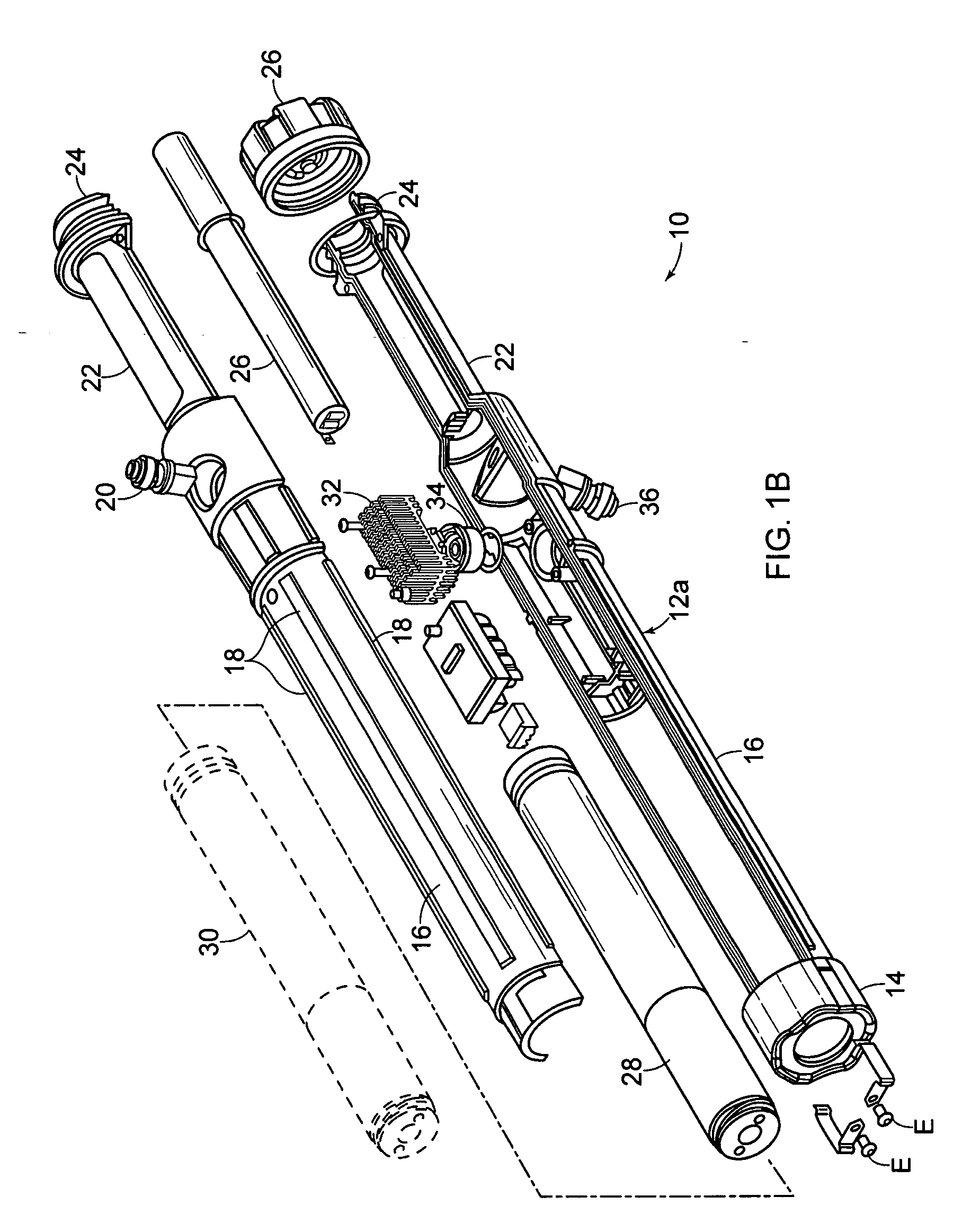Electromuscular incapacitation device and methods
a technology of electromagnetic incapacitation and electrodes, which is applied in the field of electromagnetic incapacitation devices and methods, can solve the problems of increasing morbidity and mortalities, little improvement or change in emi approach, and little objective laboratory data available describing the physiological effects of stun devices, so as to achieve effective and enhanced incapacitation and less chance of permanent nerve and muscle injury
- Summary
- Abstract
- Description
- Claims
- Application Information
AI Technical Summary
Benefits of technology
Problems solved by technology
Method used
Image
Examples
example 1
Determination of Optimized Frequency to Achieve Tetany in a Mammal
[0054] This experiment shows that the optimized frequency of a waveform to produce tetany in a subject mammal is in a range from about 50 Hz to about 70 Hz.
[0055] Voltage was maintained while the frequency of the waveform was varied between 1 Hz-1000 Hz, and electromyogram (EMG) data from the mammals was recorded for each stimulus frequency (i.e., 1, 2, 5, 10, 20, 50, 60, 70, 100, 200, 500, 1000 Hz). Stimulating needle electrodes were placed on either side of a femoral nerve of a subject approximately 1 cm apart, while recording electrodes were placed about 8 cm apart, one on a knee and the other in a middle part of the rectus femorus muscle. Recordings were taken from both ipsi- and contralateral sides of the body. The stimulus pulse amplitudes were maintained at 60 V for each frequency tested and duration of the waveform pulse was 0.1 ms in all cases. The waveforms tested comprised a generally square shape pulsed...
example 2
EMI Produced by Waveform Generated by the Circuit of FIGS. 3A-3B
[0060] This example demonstrates that the waveform generated by the circuit depicted in FIGS. 3A-3B produces EMI in a mammal.
[0061] Stimulating electrodes were fabricated out of 3 mm diameter stainless steel. Care was taken in the design and fabrication process to promote uniform charge distribution during stimulation. Two planar and two hemispherical electrodes were fabricated. The hemispherical electrodes were filed while turning in a drill press until a ball shape was achieved. Layers of primer and enamel paint were applied to all surfaces. The paint was allowed to cure at about 40° C. for 1 hour. To create the planar electrodes, paint was removed from one end with 600 grit sandpaper and the surface was polished with 4-0 emery paper until the surface was shiny. Paint was removed and surfaces were polished on the hemispherical electrodes in the same manner. An additional 2 mm of paint was removed from the base of th...
example 3
Acute Study of Effects of a Waveform on Subject
[0065] The purpose of the experiment was to characterize the acute effects of damped pulsed DC electric fields as produced by the circuit of FIGS. 3A-3B on living tissue.
[0066] Several experiments were performed in vivo on mammals, using the circuit in accordance with that depicted in FIGS. 3A-3B. An EMI test device utilizing the circuit in accordance with that depicted in FIGS. 3A-3B was used to deliver electrical signals to the subjects comprising 0.15 μF capacitance. The device was held in a vertical orientation by clamping a 2″ PVC pipe to the stand and was assembled such that the device was sheathed in the pipe to permit a uniform downward force on the device resulting from a total mass of 1.5 kg. A 12.0 VDC, 800 mA power supply was used as the power source. The subjects were anesthetized during all electrical discharges and all subsequent monitoring sessions.
[0067] Compound muscle action potential (CMAP) recordings were obtain...
PUM
 Login to View More
Login to View More Abstract
Description
Claims
Application Information
 Login to View More
Login to View More - R&D
- Intellectual Property
- Life Sciences
- Materials
- Tech Scout
- Unparalleled Data Quality
- Higher Quality Content
- 60% Fewer Hallucinations
Browse by: Latest US Patents, China's latest patents, Technical Efficacy Thesaurus, Application Domain, Technology Topic, Popular Technical Reports.
© 2025 PatSnap. All rights reserved.Legal|Privacy policy|Modern Slavery Act Transparency Statement|Sitemap|About US| Contact US: help@patsnap.com



